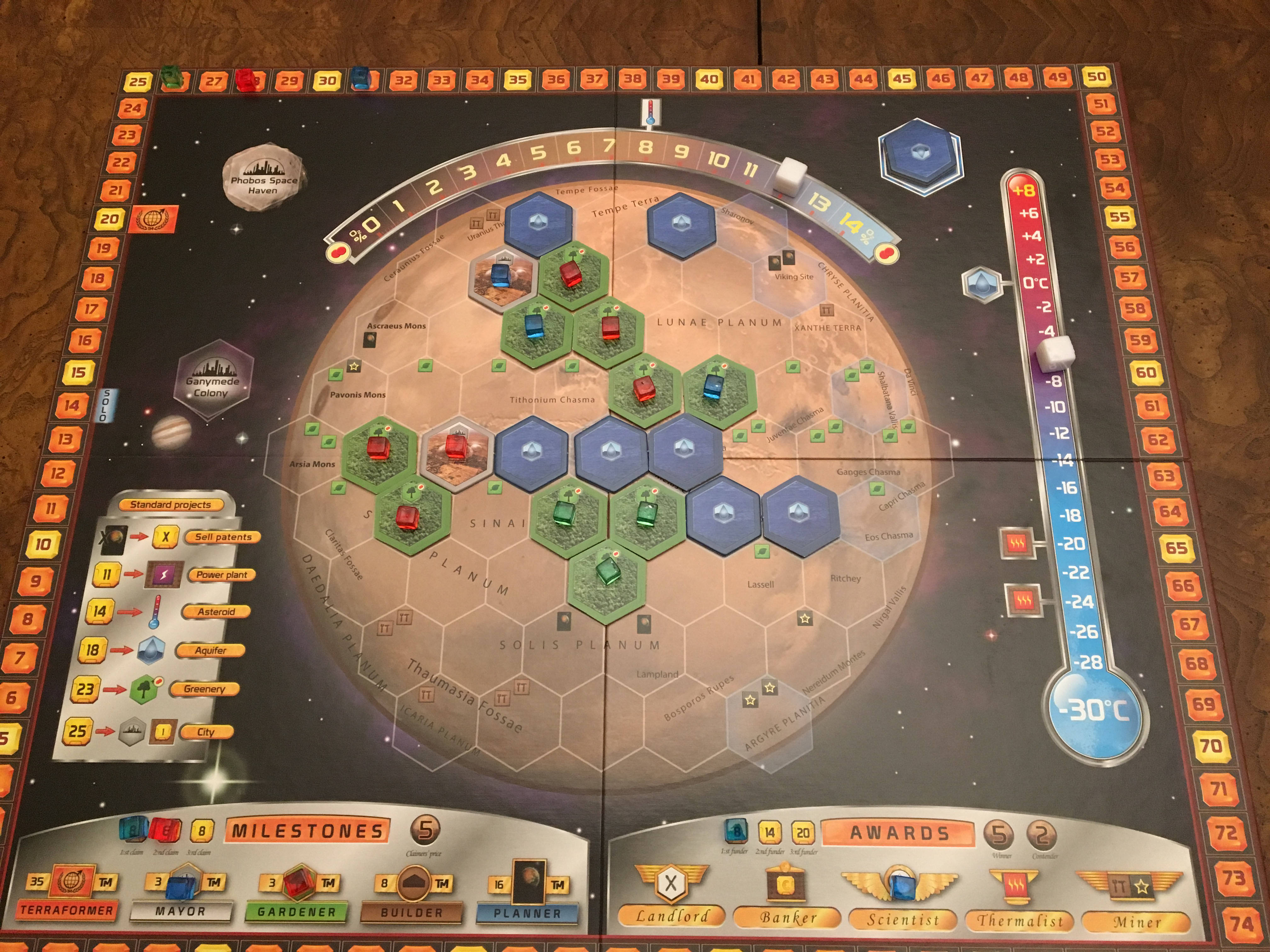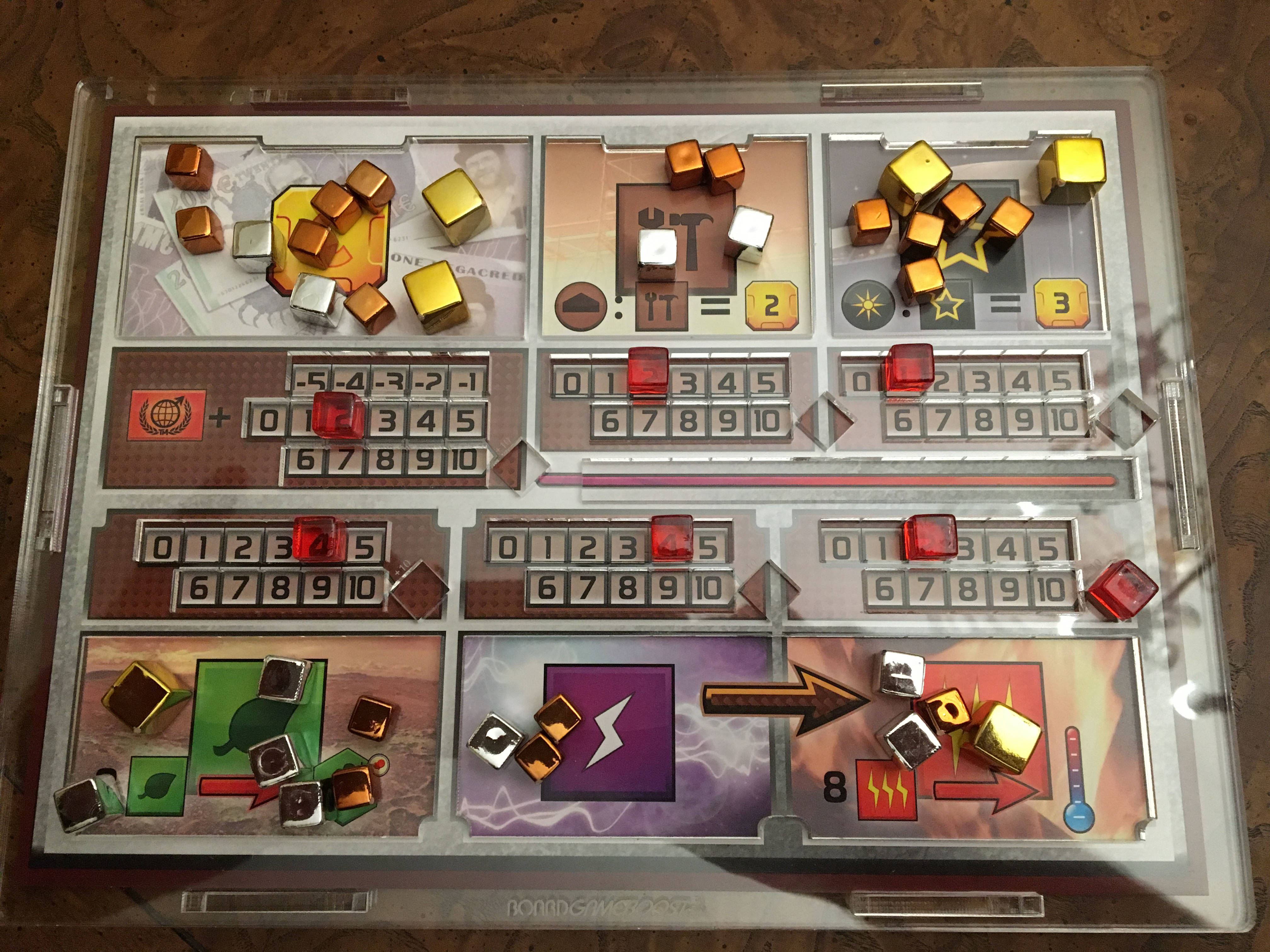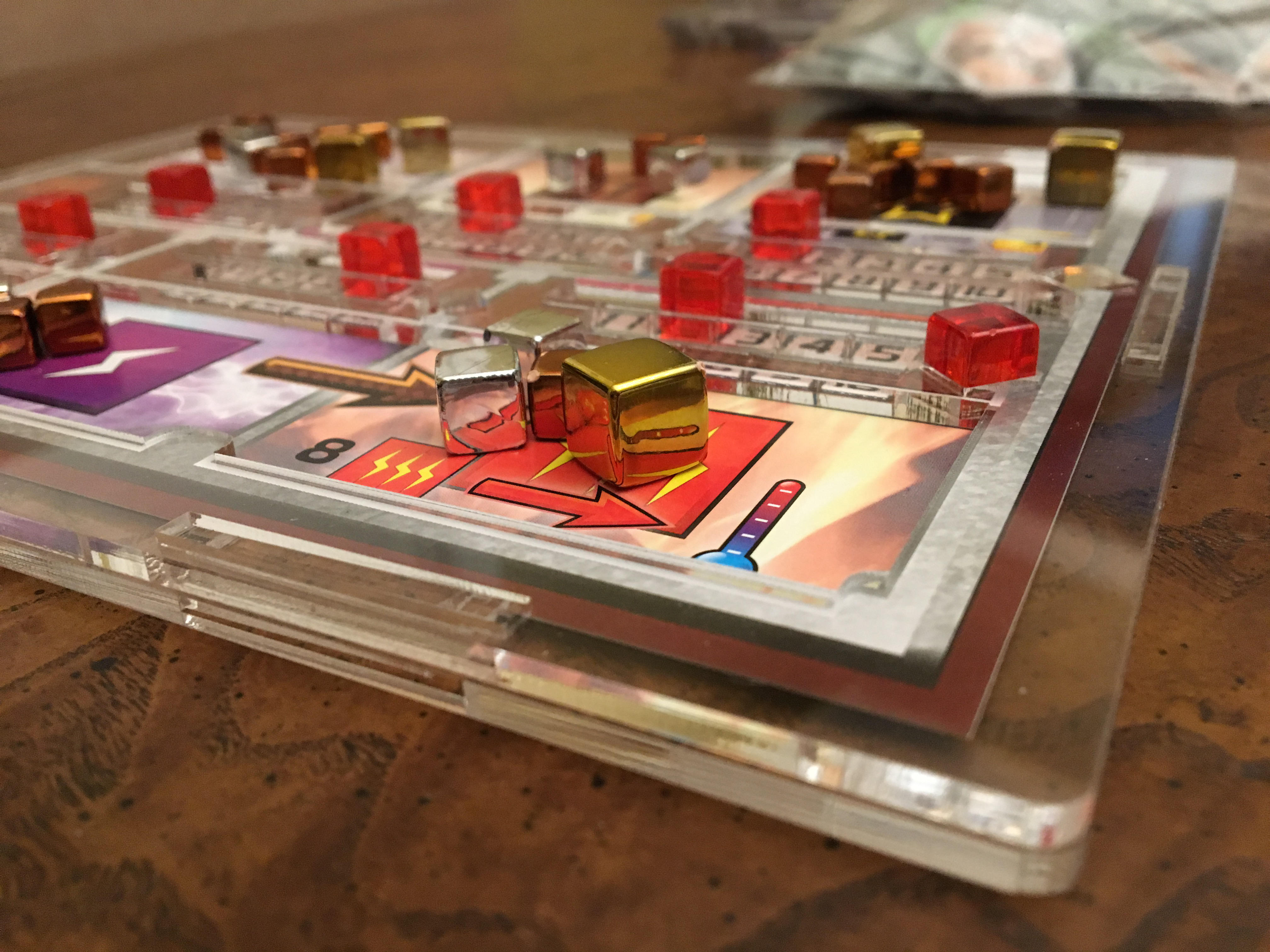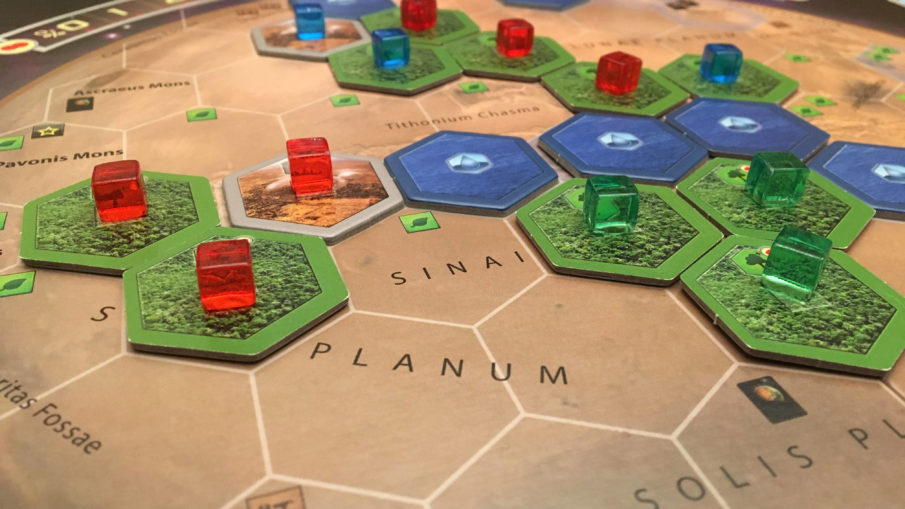If you’re only exposure to the Red Planet comes from visuals of Matt Damon pooping on his potatoes or mutant women with three breasts, I have some news for you. First of all, those are movies and, secondly, those weren’t real breasts. Don’t worry though, because Mars is an actual, real-life place and it’s only 140 million miles away. Best of all, according to Terraforming Mars from Stronghold Games, its surface is covered with a resource more valuable than unobtainium: Victory Points.
Yes, the ever elusive Victory Point makes its appearance in this sci-fi euro from designer Jacob Fryxelius. VPs are given the pseudonym Terraform Rating, but a rose by any other name, amirite? Besides the ubiquitous VPs, Terraforming Mars has all the trappings of your standard euro: get resources, turn resources into things, turn things into VPs. Before you walk away in a huff, however, you should know that Terraforming Mars does all this with a bit of gusto and just enough hard sci-fi to keep even a fervent Ameritrasher interested.

The goal of Terraforming Mars is to lead the forces of Napoleon against the Seventh Coalition and conquer all of Europe. Just kidding! The goal of Terraforming Mars is to terraform Mars! Shocking, right? Each player will be the CEO of their own corporation (complete with special abilities) building projects to bring water, greenery, and life to the otherwise barren planet.
All this science is done via cards, and there are a lot of them. Over 200 cards are in the game, each representing a different project that your corporation can undertake. We’ve got projects that will slam comets into the planet to create oceans, creating wildlife habitats and stocking them with critters, building cities, or doing all sorts of other activities to make the planet a better place to be.

Projects (cards) aren’t simply dealt out. Instead they must be purchased with cold, hard cash which in the future will be called MegaCredits, apparently. MegaCredits are hard to come by and are also needed to play these projects from your hand so using them to buy cards in the first place is a tough decision. Done poorly and you’ll find yourself with a bunch of crap you don’t need and empty pockets. So, it’s basically like a trip to Costco.
Besides letting you build things, cards also will generate resources which will allow you to do more stuff. Apart from MegaCredits, you also collect Steel, Titanium, Plants, Energy and Heat. Each turn you’ll collect a certain number of each of these (how much each turn is recorded on a track on your player mat), and after you gather a bunch you can spend them. On what, you ask? Well, when you have 8 Plant resources, you can covert that into Greenery tiles which allow you to place green areas on Mars’ surface, raising the Oxygen level of the planet. Energy powers different cards, but can also be converted to heat which allows you to raise the overall temperature of the planet. Steel and Titanium act as cash for different projects. For example, you can buy building projects with MegaCredits, Steel, or a combination of both. Steel is more efficient, with each steel cube counting as 2 space bucks. Titanium can be used to build space projects and counts as 3 bucks per cube.
Raising the oxygen level and temperature are the end goal, and the game ends when the thermometer reads +8oC, the atmosphere is 14% O2, and all 9 ocean tiles have been placed on the board. Tally up your points and the winner is the one farthest along on the Terraform Rating track.
I’ve left some details of gameplay out. There are milestones and awards which can give players more points at game’s end and standard projects which you can perform without the use of a card. The guts of the game, however, is in the card play, hand management, and finding those combos that build a resource generating engine.

What Terraforming Mars has going for it over some other euros that would take this theme and make it dry as a Martian salt pan is the science. Sure, it’s pie in the sky stuff, but there’s enough of a hint of truth to it that mining that asteroid for titanium seems kind of neat, even if it’s really just playing a card that lets you bump up a track by a couple of spots. It’s also got a bit of “take that” to it, making it far less multiplayer solitaire than you’d might expect. Want to make an asteroid slam into Mars to create an ocean? Do it, and blow up a bunch of your competitor’s plants while you’re at it. Better yet, introduce predators and watch them slowly eat your neighbor’s livestock. Hilarity ensues.
While it’s a great deal of fun, it’s by no means perfect. The production is fine with shiny plastic cubes for resources (they feel metallic, but I’m pretty sure it’s just my mind playing tricks due to their shiny coating) and transparent plastic cubes for player markers. The tiles are sturdy and functional, if a bit drab. The player mats, however, are an abomination and the person who okayed their production should be taken out back and flogged. Each player mat has places for resources as well as 6 tracks for recording each resource’s current income level. This is fine, but the mat itself is printed on flimsy card stock with nothing to keep cubes in place. Be prepared to have cubes shifting this way and that and to continually be asking if you were at 2 or 3 on the Titanium track, or how much Energy you were supposed to get this round. It’s bad enough (and I like the game enough) that I felt forced to buy acrylic trays for my game so this stopped happening (I got a set of 5 from BoardGameBoost, but they cost me nearly as much as the game did. They are excellent, though, and I wouldn’t attempt to play again without them).
Terraforming Mars has been a big hit around the house, with my two older kids declaring it the best of all time. They’re prone to hyperbole, but they’re onto something. Definitely one of the best releases of 2016.
[For those without friends or willing children, Terraforming Mars also offers a solitaire option. I usually love solo gaming, but haven’t had the chance to get this to the table, so I didn’t comment on it in the review. That said, I know there are some that base their purchases on the ability to play the game solo, so I thought I’d mention that not only is it possible, but the rules to do so are in the manual, ready to go.]



I am experiencing jealousy.
Played this one at my last game club meeting (read: the last meeting I actually made it to) and have just about the same thoughts. I enjoyed the game for the most part, thought the cards were interesting, and there were definitely interesting decisions to be made. However, it felt a little like multiplayer solitaire at times despite the fuckery aspect, and you’re not kidding about the awful player mats - how hard would it have been to make them thicker with cutouts?
That’s why I read Dave’s reviews, to destroy all of my dreams.
I really really like TM. If anything, it’s not attacky enough, with few cards allowing you to dent another player’s progress, but that’s just me and my bad habits from other hybrid designs (Argent: The Consortium, Sons of Anarchy). However, we’ve got expansions coming and the game has been such a hit for Stronghold, with a big reprint coming soon, that I think I can look forward to added savagery.
I’m not keen on the inconsistent art; I know Fryx/Stronghold are small but smooth operators so they can’t afford to employ one artist to do it all, but I do wish it had a more unified look. Production quality is good, but I think the metallic cubes will wear badly quite soon, and the player mats are not really fit for purpose. I think a better design might have been out of Stronghold’s reach in terms of production costs, though.
So many members of my game group became obsessed with this game, but I kept missing it (was engaged in another game, or didn’t have time to play this one when the opening was there, etc).
I finally played it.
And I liked it. A lot.
But I don’t understand the obsession, and while I would definitely like to play it again, I don’t have to play it again.
So I’m not sure why everybody’s so obsessed.
Definitely not obsessed. In fact, I have yet to introduce it to my regular game group as I’m not sure it would be a hit with them. Fits perfect in that “family” game though where you’re not going to attack anyone enough to piss them off, but its competitive enough so we all feel like we’re playing a real game.